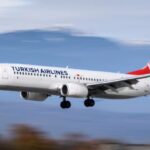If you have ever taken a plane, then you might have noticed that airports have their own way of being identified. For example, there is always a short code made of three-letters between brackets after the airport’s name when booking online. The same codes are also found on your boarding pass. Do you know what’s behind those three letters? Also, are these letters the only way to identify airports? Let’s take a closer look!
Two “names” for each single airfield
It doesn’t matter how big the airport is; every single airfield must be identified by pilots and air traffic controllers (ATC) easily and without the risk of getting confused. When it comes to safety, more is better, as the Latins used to say: “Melius abundance quam deficere.” The first code, the one we usually come across, is the International Air Transport Association (IATA) code. The second one, which is better known amongst pilots and air traffic controllers is the International Civil Aviation Organization” (ICAO) code.

The IATA-code
Since this code is made of three letters, it is also commonly known as the three-letters code. The origin of this code dates back to the 1930s. But how were these letters chosen in the past? They were extrapolated from the two-digits abbreviation of an airport’s nearest weather station. Nowadays, however, this method is no longer in use. Nowadays, the IATA-code is derived from the airport’s city, for example, HAM for Hamburg Airport, or from the airport’s name, such as JFK for New York City’s John Fitzgerald Kennedy International Airport.
One might think that it is impossible to name all airports in the world with this method. And they are right! Even though there are 17.586 possible combinations for the IATA-code, these cannot cover all of the planet’s airfields. Therefore, some airports share the same IATA-code. However, these are smaller airports for safety reasons, and they find themselves on different continents to avoid misunderstandings.

If you’re reading this article, you are probably fond of aviation. Well, in this case, it might not surprise you that in the past decades, these three-letters codes have become a proper marketing and communication asset for many airports around the world. When we hear or read the word Los Angeles, it is highly probable that the code of its airport, LAX, pops into your mind! We find airport codes are frequently immortalised by infamous songs and film lines. It’s not that uncommon to hear characters in films or books saying, “I’m heading to LAX, do you want a lift?” or “She lands at 3.45 pm at JFK, can you pick her up?”.
More importantly, some large cities, such as London, Paris, and New York, have more than one airport. In this case, it is essential to know which one you’re taking off from! A historic TV scene that emphasises the importance of these codes can be found in the finale of the American TV series “Friends” (min 2:42). Two of the main characters, Ross and Phoebe, are trying to stop their friend, Rachel, from flying to Paris. However, they go to JFK instead of EWR, Newark-Liberty International. A mistake that could have changed the lives of the characters. Of course, this is fiction, but such a scenario could happen to every one of us in the real world!
The ICAO-Code
This code is mainly used by airlines and Air Traffic Controllers (ATC). In this case, we have four letters that follow a specific pattern: the first letter represents the continent or the airport’s particular geographical region. For example, the letter E—- will be found in airports in the North of Europe, while L—- is the letter for airports in the South of the continent. The second letter is specific to just one country within the continent or geographical region. EG–, for example, is the beginning of the code for airports in the UK. Finally, the last two letters identify the airport. In the case of London’s largest airport, London Heathrow, the ICAO code is EGLL.

If you think that the ICAO code is less cool than the IATA one, then you’re not alone, but just remember that the pilot’s digit in the Flight Management System (FMS) is the ICAO-code. Without it, the plane wouldn’t take you to your desired destination!
Do you know the IATA- and ICAO-code of your nearest airport? Let us know in the comments below!









